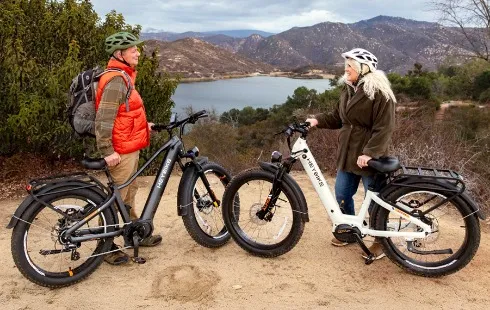
Oktoberfest in the news: How people around see beer's birthday
Section: Arts
Nations around the globe are stepping up, determined to uphold the 2015 Paris climate agreement of limiting the global warming to well below 2 degree Celsius, even as the United States infamously pulled out of it recently!
Climatologists agree that the Paris climate deal sets an ambitious goal, which we can at best, strive to achieve. The sheer scale of reducing carbon dioxide (a major contributor of our warming planet) by curbing greenhouse gas emissions would take an unprecedented amount of concerted global effort.
But the question remains -in the race against time to mitigate effects of climate change, can we truly uphold the Paris climate agreement?
In the worst-case scenario, if we fail to do so using conventional methods shouldn't we have a backup plan? What are the alternatives? For instance, if we plant enough trees, we can get rid of excess carbon dioxide! Doesn't that sound straightforward? But how can we be sure of this plan succeeding? This is something scientists at the Potsdam Institute for Climate Impact Research, Germany, explored in their recent study published in Earth's Future, using mathematical models and computer simulations.
You may ask why play with models and not simply plant trees and create forests? "It's too unrealistic to actually have a biomass plantation that could suck out all the excess carbon dioxide from the atmosphere," says Dr. Lena Boysen, lead author of the study.
How so?
In order to effectively remove the carbon dioxide, we need fast-growing plants and grass species! "It is not the nice forest that you imagine it to be, instead it is a highly "managed" plantation," said Boysen.
And if we continue to emit CO2 as we do today and start planting trees once we cross the 2-degree limit, the study showed that these mass plantations would engulf huge areas, leading to untenable situations, interfering with our biosphere, ecosystem and impeding food production.
To counter this unrealistic scenario, the authors explored another model to find out if there is a way to complement a strong greenhouse gas mitigation effort. They studied an integrated socioeconomic model, where biomass plantations are smaller and scattered around the world. One would assume that such a situation would be somewhat tenable. However, the study showed that upon slowly scaling the areas up through the century, it still would require a lot of water, fertilizer and high-class machinery, to make these efforts successful!
Although prior scientific work has used approximations and has calculated estimations of such situations, the current study is unique as no one has simulated it or provided a map of the world and shown how it would look like with biomass plantations as a mitigation alternative.
"These results really drive home the immense quantities of carbon we're adding to the atmosphere by burning fossil fuels. Our emissions dwarf what we could counteract with even major - essentially unimaginable - changes to agriculture and forest cover worldwide," said Yarrow Axford, Associate Professor at Northwestern University who studies Arctic climate history to understand modern day climate change.
The study highlights the importance of mathematical models and predictions in such difficult situations since there are myriad ways our future could develop.
Models help us get a better understanding of what a future would resemble- all with a tweak of a variable or parameter using computer simulations. And models are where one can push the limits, "without having to change the real world," said Boysen. Since the authors used different mathematical functions to describe types of plants, bio-energy etc. with several different model parameters at their disposal the authors needed to use supercomputers to store and analyze terra bytes and petabytes of data!
Boysen, who is a postdoctoral fellow currently at the Max-Planck-Institut fur Meteorologie at Hamburg, plans to study the effect of drought and heat stress in forests, given that we expect to have more heat waves in future.
And what if the unthinkable happens or exceeds it -say, the temperature ramps up to 4 degree Celsius? According to the study, by mid-century we will have to have biomass as large as two-thirds of agriculture area for today!
But there is hope. "The good news is that we're actually seeing countries around the world installing lots of new solar and wind power, investing in energy and climate research, and taking a future-oriented approach to energy development that recognizes the multiple benefits of diversifying our energy supply. There is a big transition underway," said Axford.
Image credits: https://pixabay.com/en/tree-field-of-rapeseeds-blue-sky-2147010/

Section: Arts

Section: Business

Section: Business

Section: Arts

Section: Health

Section: Arts

Section: News

Section: News

Section: Arts

Section: Business
Health Insurance in Germany is compulsory and sometimes complicated, not to mention expensive. As an expat, you are required to navigate this landscape within weeks of arriving, so check our FAQ on PKV. For our guide on resources and access to agents who can give you a competitive quote, try our PKV Cost comparison tool.
Germany is famous for its medical expertise and extensive number of hospitals and clinics. See this comprehensive directory of hospitals and clinics across the country, complete with links to their websites, addresses, contact info, and specializations/services.
One of the most beautiful squares transforms into a summer stage every year for two days. The Gärtnerplatz Open-Air features a free music and cultural program across three stages, as well as street food from local vendors. On Saturday, the main stage at Gärtnerplatz offers something for everyone,...



No comments yet. Be the first to comment!